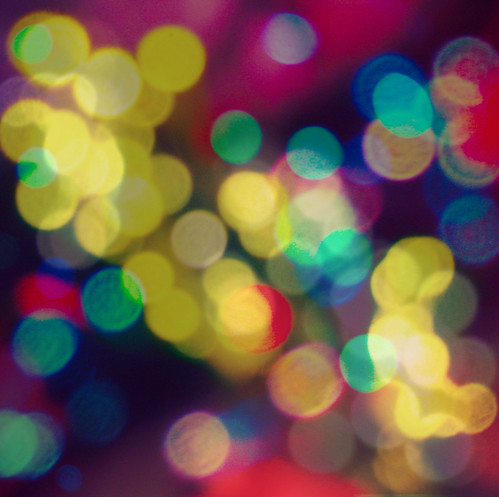
Without sounding like every other tired pretentious film writer, 3D doesn’t interest me. The new age of high definition intrigues me but rarely evokes the emotive qualities of classic theatre experiences; it only succeeds in planting me more in reality than any human honestly needs to be.
Now Technicolor, not just a forged style or a flirtatious fad, for the first half of the 20th century it transformed cinema into a genuine art-form.
Call me old fashioned if you will, but when it comes to films, I’m both dreamer and an idealist.
Recently I’ve found myself diving into my classic cinema collection perhaps through a bad case of nostalgia, or just sheer frustration for recent technological developments, but they really don’t make them like they use to. Lush, crisp and almost unbelievably vivid colours, the likes the planet Pandora can only dream of.
Not all these films will necessarily change your life, and most likely you have seen all five time and time again.
However, next time you sit down to watch these films, take a moment to separate yourself from the narrative and performances and just let yourself absorb how gorgeous they truly are.
Maybe, just maybe, your life has been slightly more enhanced for it.
The Red Balloon
Winner of the coveted Palm D’Or, at the Cannes Film Festival, in 1956 as well as the Oscar for Best Original Screenplay, Albert Lamorisse absolutely beautiful short film is arguably one of the greatest children’s classics of all time.
The film tells the tale of a young boy and his bright vibrant, seemingly sentient red balloon, as they light up the pale streets of Paris, with their innocent and playful activities.
A forgotten gem, climaxing in a scene which conjures up heart-warming memories of Pixar’s 2009 masterpiece, Up.
Long after its first viewing over 50 years ago, The Red Balloon still has the power to take the audience into a world of pure imagination and wonder.
Rear Window
Alfred Hitchcock has long established himself as the master of suspense, yet to be surpassed by his more modern predecessors.
Without a doubt one of the great thrillers of all time, Rear Window was also a film of true colour and elegance. Though set primarily on a single set of an apartment courtyard, Hitchcock captured the multi-layered beauty of New York inner-city culture magnificently.
And if you’re still to be convinced by Rear Window’s surprise entry into the list, I may point you in the direction of the immensely radiant and gorgeous Grace Kelly. Enough said.
The Red Shoes
Based loosely on the fairy tale of the same name – as well as baring no relation to The Red Balloon – the 1948 classic is, in this writer’s opinion, the perfect film to illuminate a cold winter’s night.
Though not necessarily catered for stern male audiences, The Red Shoes contains one of the most stunningly crafted and ambitious scenes in cinematic history with its 20 minute ballet of the folk tale it was originally based on.
Martin Scorsese personally oversaw its digital restoration in 2009, often citing the directors of the film, Michael Powell and Emeric Pressburger, as primary influences on his own work.
“So many moments, so many conflicting emotions,” he says of The Red Shoes, “such a swirl of colour and light and sound, all burned into my mind from that very first viewing — the first of many.”
Quite.
Willy Wonka and the Chocolate Factory
Based on the wonderful novel, Charlie and the Chocolate Factory, the 1971 musical was a beautiful example of psychedelic wonder and imagination.
Telling the tale of a boy’s journey through this seemingly endless world of chocolate, sweets and singing Oompa Loompas, fronted by the eccentric performance from Gene Wilder as the title character.
It comes much to one’s surprise however, to find the film was also subjected to heavy criticism by the author of its source material, Roald Dahl.
Amelie
The modern exception to the list, no celebration on the colour of cinema is complete without this stunning, French-classic from Jean-Pierre Jeunet.
It is fitting that I mention this last it essentially personifies the spirit of this article on its own. Amelie isn’t just a celebration of colour it’s a celebration of life that is worth living. How the most, seemingly, insignificance acts can enrich someone’s life.
"All that I desire to point out is the general principle that life imitates art far more than art imitates life." - Oscar Wilde.








2 comments:
Being a fan of colour I think your being a bit narrow-minded and harsh on the modern day films. I agree with you on the 3D and HD, but what about one of the masters of colour and contemporary film makers Pedro Almodovar whose films are lessons in colour themselves, my personal favourite of his being 'All About My Mother'. Or even more recently Tom Forde's 'A Single Man' were for the majority of the film the colour is desaturated on purpose, saving rich vibrant colour for moments of unsaid emotion were the colour becomes saturated in-scene as if turning the colour up and the viewer is left with a beautiful moment. However they used DI (Digital Intermediate) which I'm not a fan of but regardless my point is colour is still celebrated with the same effect and affection as before.
And technically they can't reproduce the same colour as before since they don't make the same film stock nowadays so give the modern day film maker a break, they are working with what they got.
Rear Window, Amelie, love it. Haven't seen Red Shoes, but it's on my to watch list:)
Post a Comment